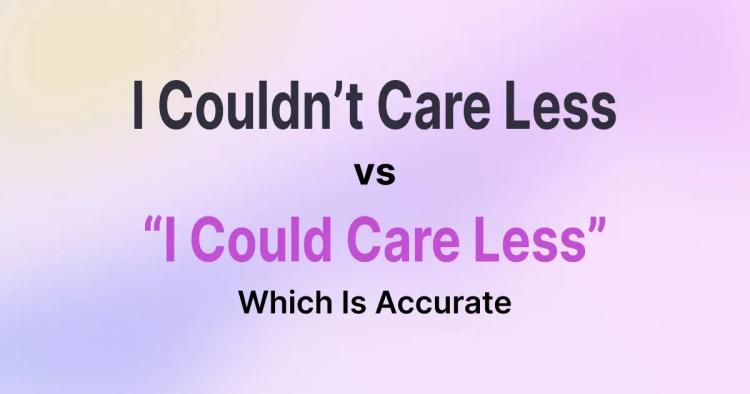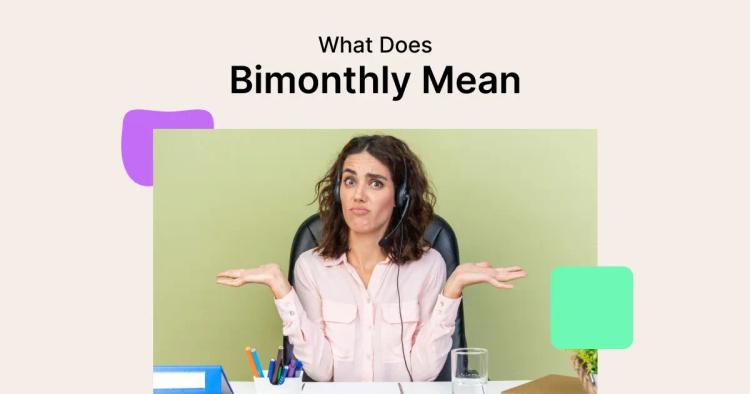In the vast expanse of language, rhyming stands as an intricate dance of words, weaving together sounds that resonate with the human soul. Its roots, buried in the ancient traditions of oral storytelling, have evolved into a sophisticated art form that breathes life into poetry and prose alike.
Rhyming is not merely a linguistic embellishment; it is a fundamental force that shapes the very essence of language. Beyond the aesthetics it adds to poetry, rhyming serves as a mnemonic device, etching words into memory.

The rhythmic cadence it introduces to language enhances the emotional impact of communication, making it a vital component of the human expressive repertoire. Join us as we embark on a journey through the rhythmic landscape of types of rhyming in English.
Perfect Rhymes

Perfect rhymes, the stalwarts of poetic symmetry, are characterized by the precise alignment of both vowel and consonant sounds. This perfection, though seemingly straightforward, requires a nuanced understanding of phonetics and linguistic structure.
Delve into the anatomy of perfect rhymes, where the symphony of sounds creates a harmonious linguistic composition.
Examples of Perfect Rhyming Words
To understand the power of perfect rhymes, we traverse through literary landscapes adorned by the likes of Shakespeare, Frost, and Poe. Each verse becomes a testament to the timeless allure of words that echo each other with a mesmerizing precision.
They are characterized by the exact correspondence of sounds in the final stressed syllables of two or more words. Here are examples:
Cat and Hat: The final stressed syllables "-at" in both words create a perfect rhyme.
Moon and Tune: The matching "-oon" sound in the final stressed syllables demonstrates a perfect rhyme.
Night and Light: The identical "-ight" ending in both words forms a perfect rhyme.
Famous Poems Utilizing Perfect Rhymes
The echo of perfect rhymes reverberates through the corridors of literary history. From the sonnets of Elizabeth Barrett Browning to the verses of Langston Hughes, we explore how these poets masterfully wielded perfect rhymes to create enduring works of art.
These poems are not just linguistic artifacts but living testaments to the enduring power of rhyme.
Near Rhymes (Slant Rhymes)

As we move beyond the realm of perfect symmetry, we enter the territory of near rhymes, where words engage in a dance of subtle similarity. Unlike their perfect counterparts, near rhymes rely on the approximation of sounds, introducing an element of unpredictability and nuance.
Join us in unraveling the subtleties that make near rhymes a playground for creative expression.
Instances Where Near Rhymes Enhance Creativity
In the hands of skilled poets, near rhymes become tools for expanding the boundaries of expression. They create a space where words can flirt with similarity without the constraints of exactitude. These rhymes allow for more flexibility and creativity. Examples include:
Worth and Breath: Although the ending sounds are not identical, the "-th" in both words creates a subtle harmony.
Lake and Luck: The shared "-k" sound provides a near rhyme, adding a hint of similarity.
Dry and Diary: The ending sounds are close but not quite the same, creating a near rhyme.
Song Lyrics Showcasing Near Rhyming Words
The world of songwriting is a fertile ground for the exploration of near rhymes. Lyrics, with their unique demands for rhythmic precision, often embrace near rhymes as a means of infusing complexity and depth.
From the poignant ballads of Leonard Cohen to the rapid-fire verses of Eminem, we examine how near rhymes contribute to the lyrical richness of music.
Identical Rhymes

In the realm of simplicity, identical rhymes emerge as the playful companions of language. Here, words not only share sounds but echo each other with delightful precision. Unpack the seemingly straightforward nature of identical rhymes and appreciate how they infuse verses with a whimsical charm.
Playful Examples from Children's Literature
Children's literature, a domain where simplicity is celebrated, is a treasure of identical rhymes. From the whimsical worlds created by Dr. Seuss to the enduring charm of A. A. Milne's characters, identical rhymes become the building blocks of early literacy.
These involve the repetition of the same word or phrase. While less common, they can add emphasis or playfulness. Examples include:
Bear and Bear: The repetition of the word itself creates an identical rhyme.
Mist and Mist: Similar to the previous example, the word is repeated for an identical rhyme.
How Identical Rhymes Add Musicality to Verses
Beyond simplicity, identical rhymes contribute to the musicality of verses. In this exploration, we delve into the rhythmic precision of rap lyrics, where identical rhymes are harnessed as a driving force.
From the gritty streets of hip-hop to the light-hearted rhythms of comedic verse, witness how identical rhymes amplify the auditory experience of language.
Eye Rhymes

As we shift our focus from auditory pleasures to visual aesthetics, we enter the realm of eye rhymes. Here, words create an illusion of similarity in their visual form while diverging in their pronunciation. It's a poetic sleight of hand that engages the eyes in a dance of recognition.
Examples of Words That Look Alike But Sound Different
The lexicon of eye rhymes is a visual puzzle waiting to be unraveled. We explore words that, at first glance, appear to rhyme due to their visual resemblance but reveal a delightful dissonance in their pronunciation.
These rhymes involve words that look similar but are pronounced differently. These rhymes play with visual perception. Examples include:
Love and Move: While the "-ove" ending looks similar, the pronunciation differs, creating an eye rhyme.
Tough and Bough: The shared "-ough" ending visually rhymes, though the pronunciation varies.
Eye Rhymes in Typography and Graphic Design
Extend the exploration of eye rhymes beyond the written word into the visual arts. In the realms of typography and graphic design, designers leverage the visual allure of words to create compositions that transcend linguistic boundaries.
Join us in discovering how eye rhymes become integral elements in the visual storytelling of design.
Rhyming in English
As we stand at the crossroads of rhyme and reason, it's essential to reflect on the profound impact of this linguistic art form. Rhyming, in its myriad forms, is not a mere embellishment but a dynamic force that shapes the way we communicate, remember, and experience the world.
Whether it's the precision of perfect rhymes, the nuance of near rhymes, the simplicity of identical rhymes, or the visual allure of eye rhymes, each variant contributes to the rich tapestry of language.
Grammar Checker Tools: A Necessity in Writing

The Evolution of Grammar Checking Software
The evolution of language meets the evolution of technology in the narrative of grammar checking software. Journey through time, from the rudimentary spell-checkers of the past to the sophisticated algorithms that power contemporary grammar checkers.
It's a tale of how the quest for linguistic perfection finds resonance in the ever-advancing landscape of technology.
How CopyChecker Stands Out in the Grammar Checker Arena
In the crowded arena of grammar checkers, CopyChecker emerges not just as a participant but as a beacon of excellence. Dive into the distinctive features that set CopyChecker apart — from its intuitive interface to its cutting-edge analytical capabilities.
Understand why writers, from novices to seasoned professionals, turn to CopyChecker for more than just error correction.
Key Features of CopyChecker
Real-Time Grammar and Syntax Analysis
Beyond the realm of error correction lies the realm of real-time analysis. CopyChecker isn't just a grammar checker; it's a virtual writing mentor that dissects your writing with precision. Its real-time analysis goes beyond surface-level corrections, providing insights into the intricate nuances of grammar and syntax.
Plagiarism Detection Capabilities
Originality is the heartbeat of writing, and CopyChecker stands guard against the threat of plagiarism. Delve into the mechanisms of plagiarism detection, understanding how CopyChecker ensures that your voice remains unique in a sea of words.
It's not just about preserving correctness; it's about safeguarding the authenticity of your ideas.
User-Friendly Interface for Seamless Editing
In the realm of editing, user interface design becomes an art form. CopyChecker transcends the mundane with its user-friendly interface, transforming the often daunting task of editing into a seamless and even enjoyable process.
CopyChecker isn't just a tool; it's a companion that understands the human nuances of writing.
Improving Writing with CopyChecker

Enhancing Clarity and Coherence
Effective writing is a symphony of clarity and coherence. Join us in exploring how CopyChecker becomes your writing confidant, refining not just individual sentences but enhancing the overall flow and structure of your composition.
Witness how each correction contributes to a more lucid and impactful narrative.
Addressing Common Grammar Mistakes
The journey to eloquence is often marred by common grammar mistakes. Traverse through the minefield of dangling modifiers, subject-verb disagreements, and misplaced commas.
CopyChecker acts as a vigilant guide, rescuing your prose from the pitfalls of common errors and ensuring that your writing stands as a paragon of grammatical correctness.
Customization Options for Diverse Writing Styles
Writers are as diverse as their narratives, and CopyChecker acknowledges this diversity with customizable options. CopyChecker adapts to different writing styles — from the formal precision of academic essays to the free-flowing creativity of fiction.
It's not just about correctness; it's about preserving and enhancing your unique voice.
Tips for Maximizing CopyChecker's Potential
Leveraging Advanced Settings for Specific Writing Needs
Beyond the surface lies the realm of advanced settings, where CopyChecker becomes a personalized writing assistant. Delve into the intricacies of these settings, exploring how they can be tailored to specific writing needs.
Whether it's academic rigor or creative flair, CopyChecker adapts to your requirements.
Integrating CopyChecker into Your Writing Workflow
Efficiency is the hallmark of any successful writing process. Learn the art of seamless integration as we provide practical tips on making CopyChecker an integral part of your writing workflow. From the inception of ideas to the final polish, CopyChecker is there, enhancing your writing journey at every step.
FAQs
What are rhyming words?
Rhyming words are words that have similar or identical sounds, particularly in their final stressed syllables. The repetition of these sounds adds a musical quality to language, often used in poetry and song lyrics.
When to use words that rhyme in English?
Rhyming words are often used for creative expression, especially in poetry, songwriting, and playful language. They contribute to rhythm, memorability, and aesthetic appeal, making them popular in various forms of artistic communication.
What is ABAB rhyme called?
ABAB rhyme is commonly referred to as "alternate rhyme." In this pattern, the first and third lines rhyme with each other, and the second and fourth lines rhyme with each other.
What is an imperfect rhyme called?
An imperfect rhyme is called a "slant rhyme" or "near rhyme." Unlike perfect rhymes, slant rhymes involve words with similar but not identical sounds, providing a more flexible and nuanced approach to rhyming.
What is an example of a slant rhyme?
An example of a slant rhyme is the pairing of "worth" and "breath." Although the ending sounds are not identical, the shared "-th" creates a subtle harmony, showcasing the flexibility and creativity of slant rhymes.
Conclusion: Elevate Your Writing with CopyChecker
In the grand crescendo of our exploration, let the symphony of words and technology resound. Rhymes meet rules, and CopyChecker emerges as the virtuoso conductor, refining the melody of your writing into a masterpiece.
As you embark on your writing journey, armed with the artistry of rhymes and the precision of CopyChecker, may your words echo in the hearts of readers, leaving an indelible imprint on the tapestry of language.
This is not merely a conclusion but an invitation — an invitation to elevate your writing, to embrace the beauty of language, and to let CopyChecker be your guide in this ever-evolving odyssey of words.




